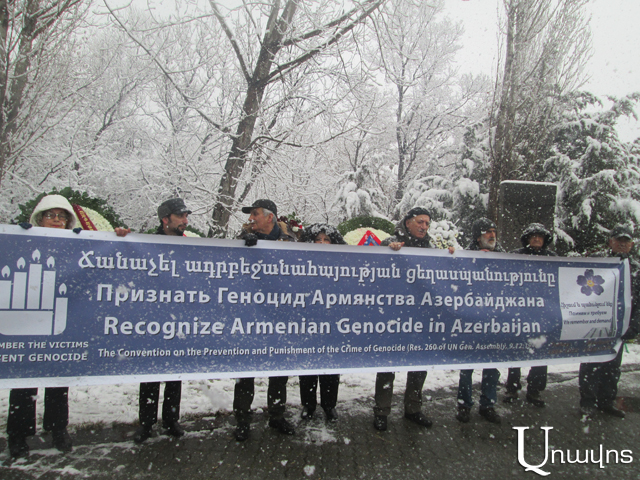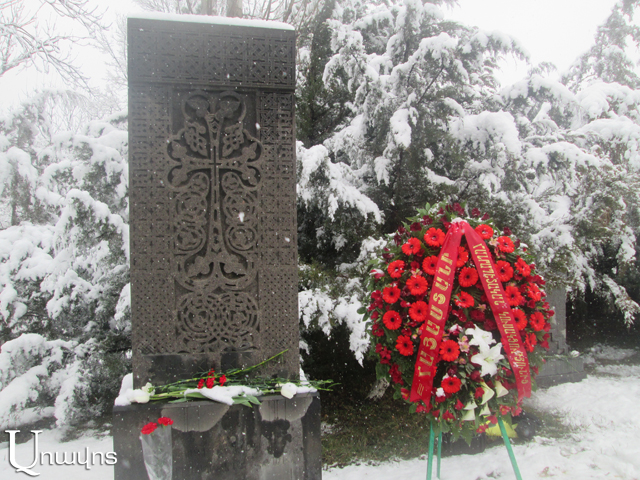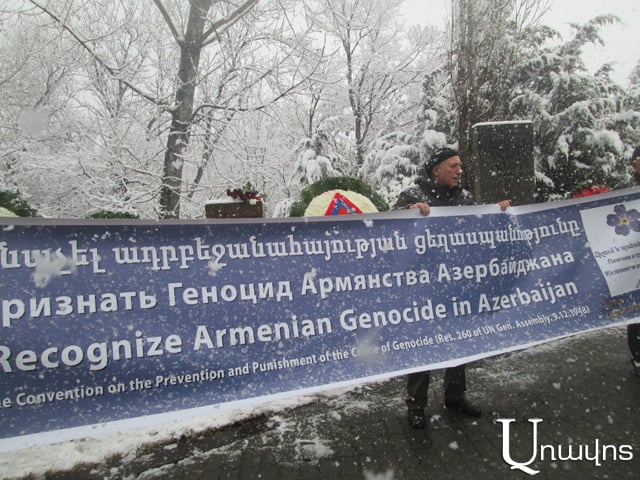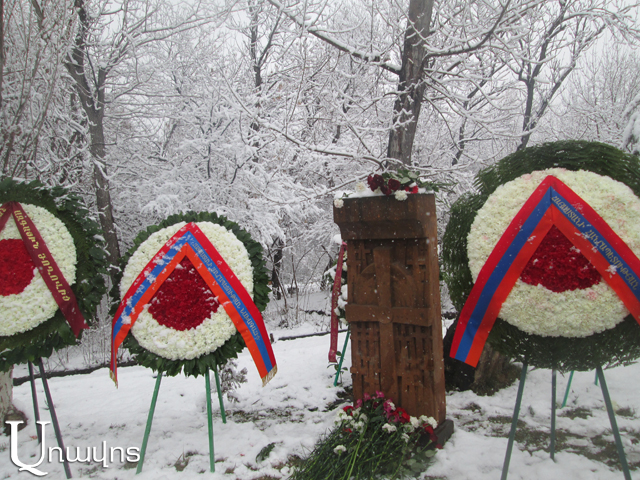“There definitely needs to be a legal and political evaluation,” Vice Speaker of the National Assembly Alen Simonyan told reporters at Tsitsernakaberd. He went to pay respects to the Armenian victims of the Sumgait massacre. By the way, this is the first time that a male political official had come to pay respects to the victims of the Sumgait massacre.
On February 27th, 1988, the extermination of Armenians began in Sumgait, a city that is 20 kilometers away from Baku, Azerbaijan. This included theft of Armenians’ belongings, as well as their slaughter. As a result of the silence from Soviet leadership, many people were wounded and killed over a period of three days. A portion of the people murdered were tortured and their bodies were burned. On February 29th, the Soviet army entered Sumgait, but it did not do anything to defend the Armenian population. This was the first ethnic slaughter of Armenians in modern Soviet history. This played a critical role in the collapse of the Soviet Union, as well as in the outbreak of the Artsakh War.


Representatives of the “In Defense of Nagorno Karabakh” committee and other NGOs were present at Tsitsernakaberd. Wreaths of flowers were placed by the monument on behalf of the President of Armenia, the Vice Speaker of the National Assembly, the Prime Minister, the Republican Party, and the Armenian Revolutionary Federation. The people gathered demanded that the killings of Azeri Armenians be recognized as genocide, and that there be moral and material compensation for this. “We do not have anything to compromise. We still have things to get back.”
Nelly Grigoryan





















































